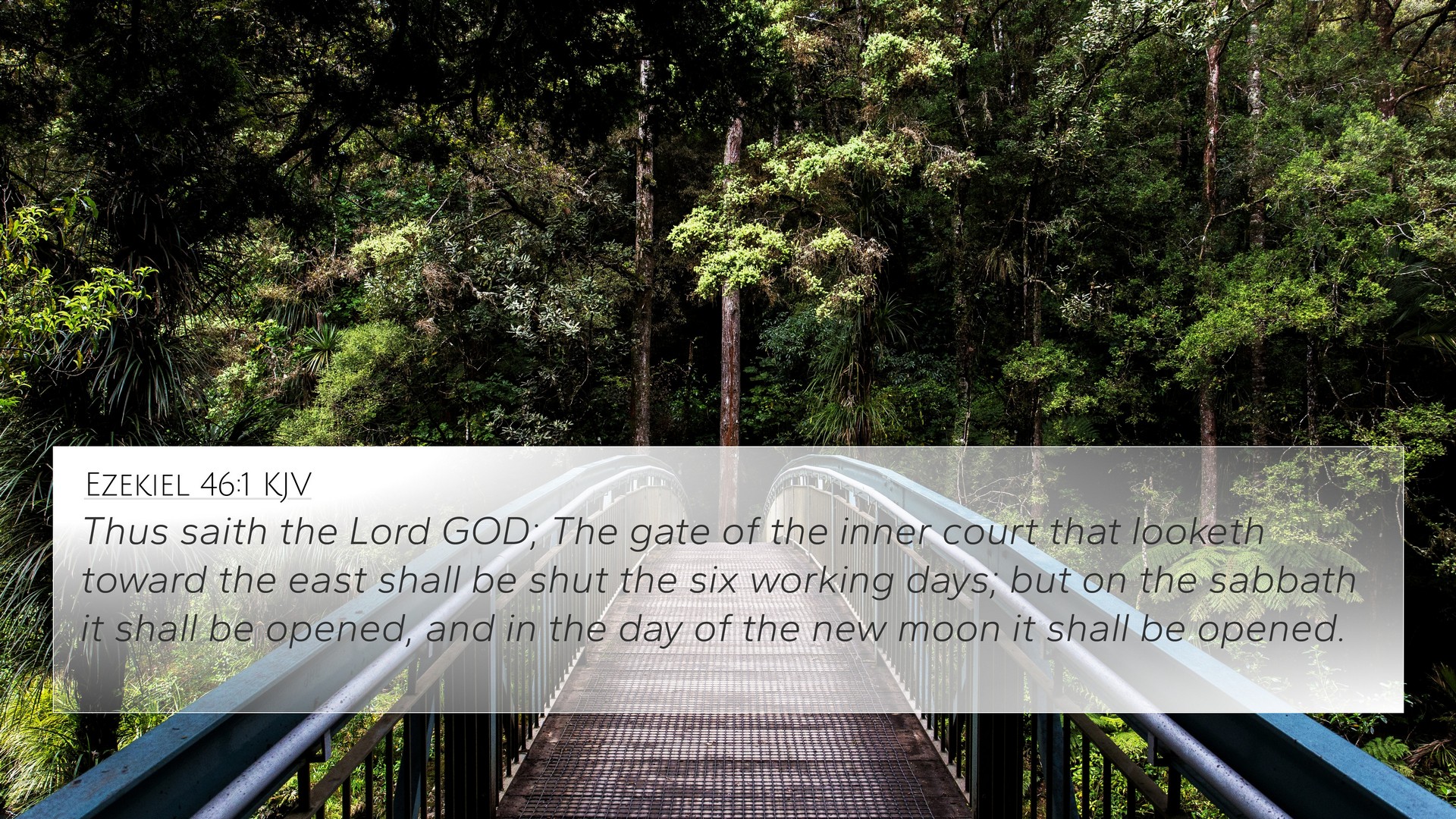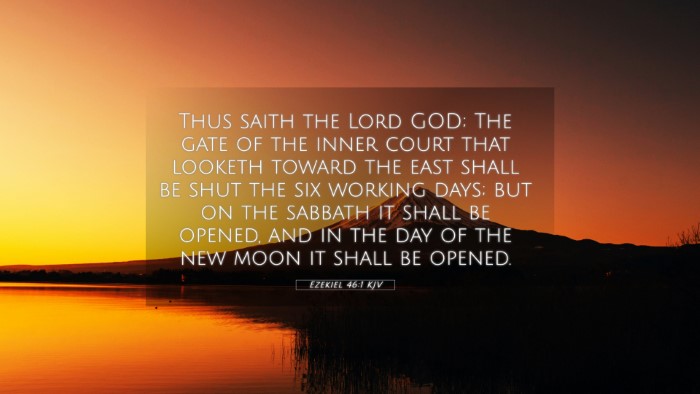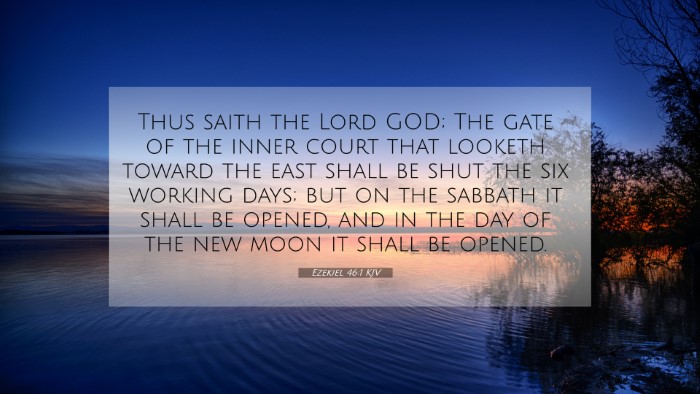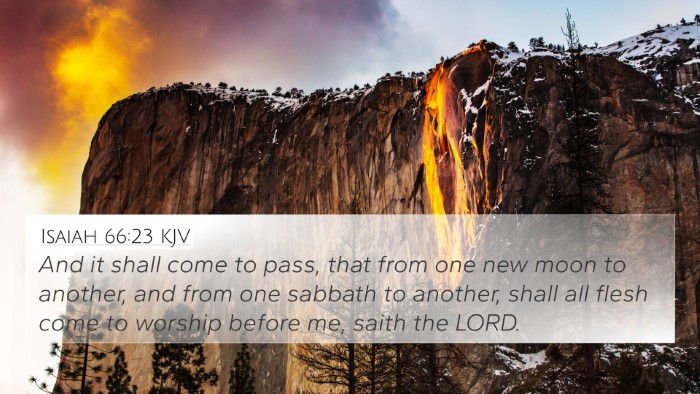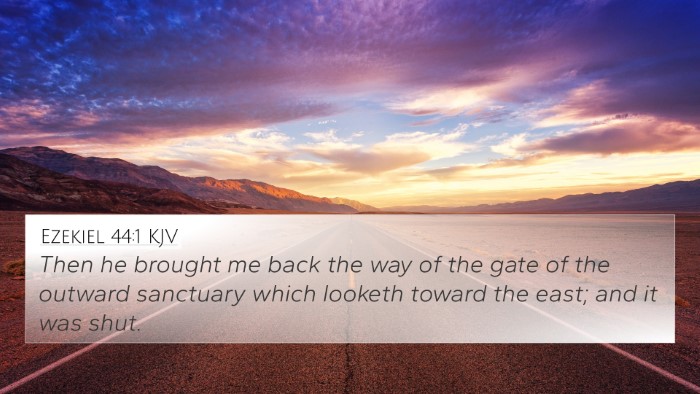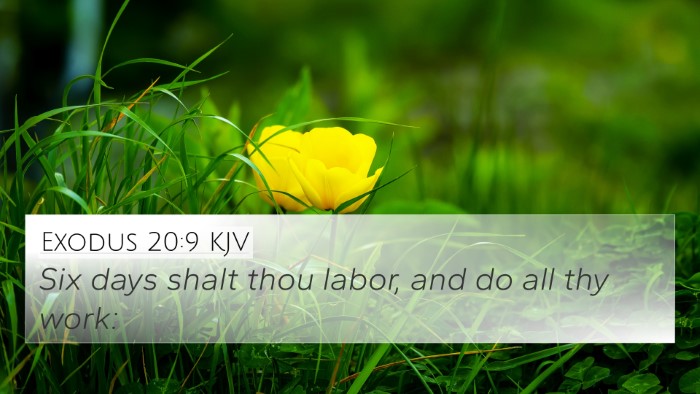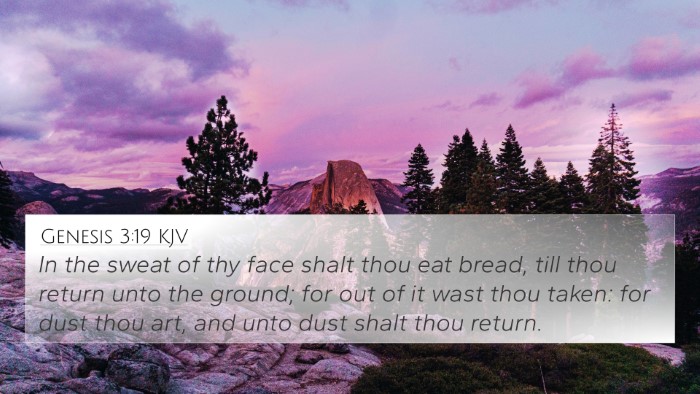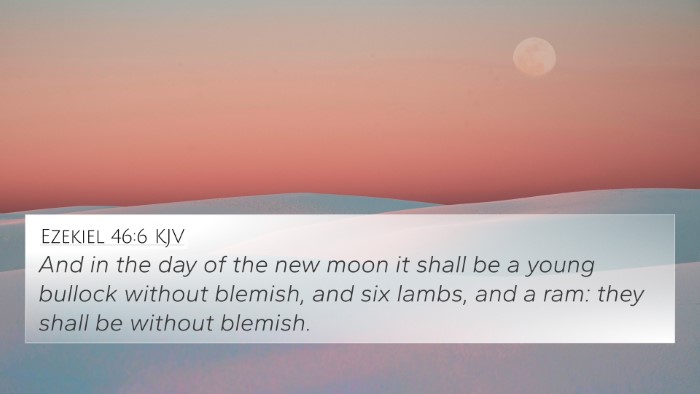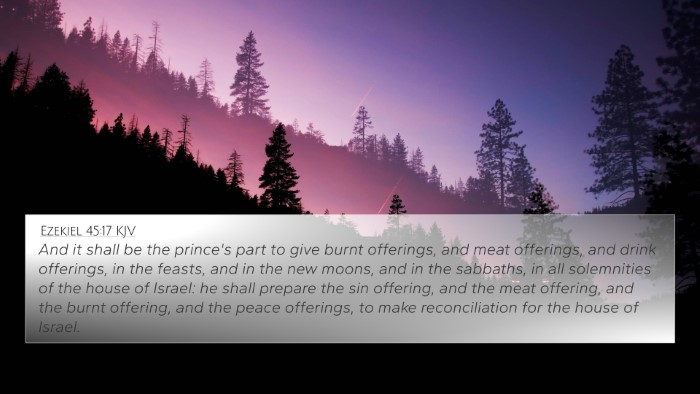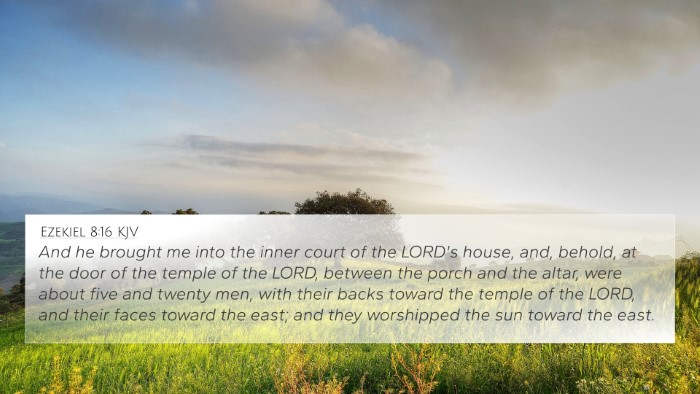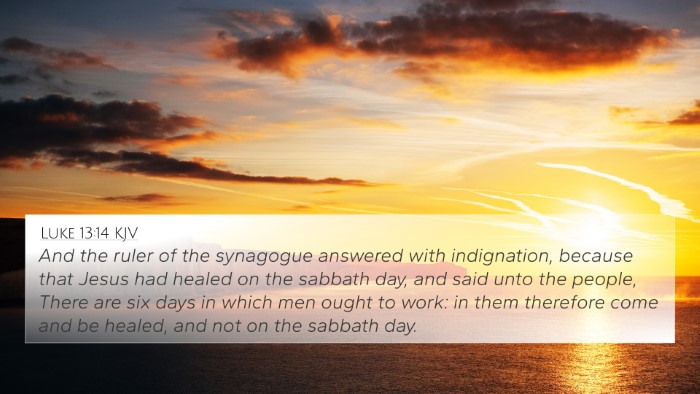Ezekiel 46:1 - Meaning and Interpretation
Ezekiel 46:1 states: "Thus saith the Lord God; The gate of the inner court that looketh toward the east shall be shut the six working days; but on the sabbath it shall be opened, and in the day of the new moon it shall be opened."
This verse is part of Ezekiel’s vision regarding the future temple. It provides specific instructions about the eastern gate's operation concerning the Sabbath and new moons, highlighting the sacredness of these times in Israel's worship practices.
Interpretative Insights from Public Domain Commentaries
-
Matthew Henry:
Henry emphasizes the importance of setting aside specific days for worship. The command to keep the gate shut on weekdays signifies a distinct separation of the sacred from the secular, which is essential for maintaining reverence in worship practices.
-
Albert Barnes:
Barnes interprets the opening of the gate on the Sabbath and new moon as a reflection of God's intent to meet His people during significant times of communal worship. This denotes that these days are consecrated for divine encounters and communal gatherings.
-
Adam Clarke:
Clarke notes that the symbolism of the gates being opened and closed indicates a controlled access to God’s presence. Opening the gate on the Sabbath symbolizes God's willingness to accept worship and offerings during times of special significance.
Contextual and Thematic Connections
Ezekiel 46:1 can be connected to several other scriptural passages, showcasing thematic links regarding Sabbath observance, worship practices, and sacrificial rites. Here are some relevant cross-references:
-
Exodus 20:8-11:
Deals with the commandment to remember the Sabbath day and keep it holy, establishing its importance in Israel's life.
-
Leviticus 23:3:
Emphasizes the sacredness of the Sabbath and the holy convocation associated with it, similar to the worship practices discussed in Ezekiel.
-
Isaiah 66:23:
Refers to all flesh coming to worship before God on the Sabbath, indicating the ongoing importance of this day in God's redemptive plan.
-
Matthew 12:8:
Jesus’s declaration that He is Lord of the Sabbath provides a New Testament perspective that fulfills the type illustrated in Ezekiel.
-
Hebrews 4:9-10:
Discusses the concept of Sabbath rest as a deeper spiritual reality, which can be contemplated in light of the physical observances in the temple.
-
Numbers 28:9-10:
Details the offerings that were to be brought on the Sabbath, correlating with the practices of worship described by Ezekiel.
-
John 10:9:
Illustrates Christ as the door (or gate) through which believers enter into fellowship with God, especially pertinent when contemplating the gates' symbolism in Ezekiel.
Application of Cross-Referencing
Understanding Ezekiel 46:1 in light of these cross-references helps to illustrate the importance of Sabbath in both the Old and New Testaments. Through careful scriptural cross-referencing, believers can comprehend the continuity of themes that God establishes in the flow of His revelation.
How to Use Bible Cross-References Effectively
Engaging in cross-reference studies provides rich insights into biblical texts, as it unveils connections that illustrate overarching themes. Here are some tools and methods to assist in this endeavor:
- Bible Concordance: Utilize a concordance to locate keywords relating to your verse of interest.
- Cross-Reference Bible Study: Adopt a systematic approach to study cross-references within thematic categories.
- Bible Chain References: Follow a chain reference that leads from one verse to another, effectively illustrating connections.
Conclusion
Ezekiel 46:1 reminds believers of the significance of times designated for worship and the importance of approaching God with reverence. Through the practice of cross-referencing biblical texts, one can gain a more profound understanding of how various scripture relates to one another, enabling a deeper engagement with God's Word.
